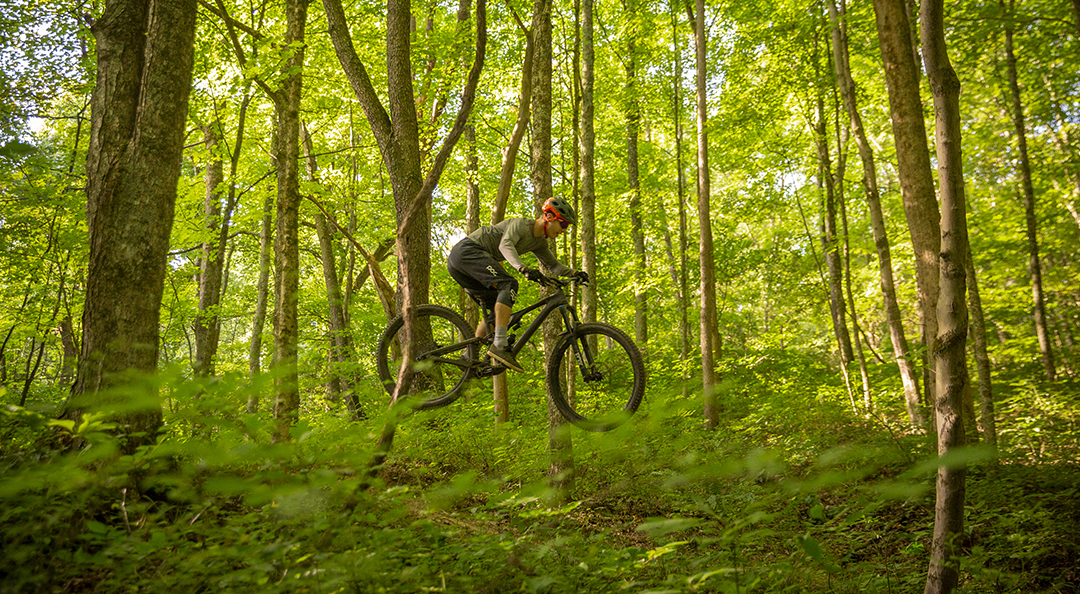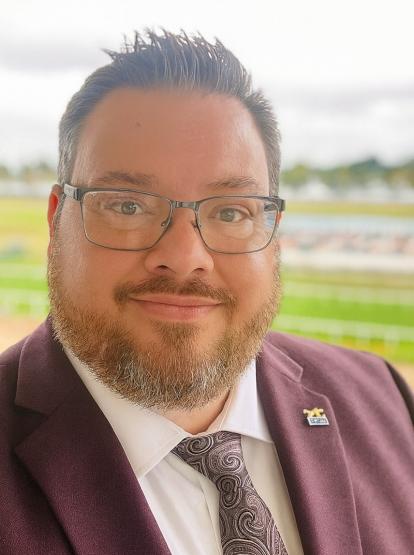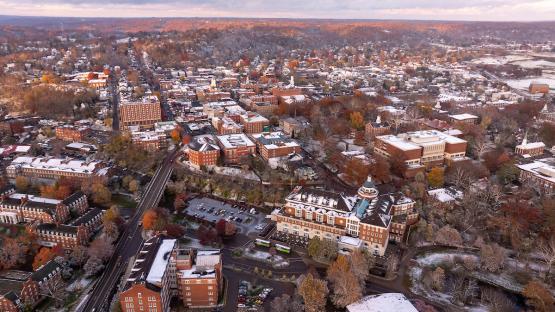
How do you build a great city? “Create a great university,” said the late U.S. Senator Daniel Patrick Moynihan of New York, “and wait 200 years.” Moynihan did not attend Ohio University, but he apparently shared with our founders the belief that fueling prosperity in a region begins with a top-tier institution of higher learning.
We most often think of a university’s role as primarily the development of talent: educating career-ready leaders who will contribute to the regional economy after graduation. We certainly do that at OHIO, though we see that as only one part of our regional commitment. As a Carnegie-designated R1 (very high research activity) University, our research work—in partnership with municipalities and community organizations—is another powerful way we influence the success of our neighboring communities.
What’s more, the needs of our region often inspire our research initiatives and help us develop and define research strengths. Our place influences our work, and our work influences the place we call home. Together with local partners, we are building solutions that have become models for other communities around the world.
Backwoods to Biking
Moynihan’s 200 years of patience is not always required, but big ideas for regional progress do often take decades to come to full fruition. More than 30 years ago, a group of local recreation enthusiasts in Athens recommended an idea for a mountain bike trail system in the Wayne National Forest, just north of the city. The idea finally took root in 2015 thanks in great part to OHIO alumnus and owner of the former Athens Bicycle, Peter Kotses, AB ’92, and Danny Twilley, MSRSS ’06, PHD ’17, who was at the time teaching recreation and sport pedagogy at the University. Twilley took the lead in drafting a request for proposal for a firm that could develop the trail design, and Kotses worked to generate the seed funding for project planning.
Fast forward to today, and the Baileys Trail System is thriving with 58 miles of trail open for use and 30 more being constructed. In the years since Twilley and Kotses partnered to jumpstart the planning effort, many more partners have joined the project, with Wayne National Forest and the Outdoor Recreation Council of Appalachia (ORCA) taking the lead.
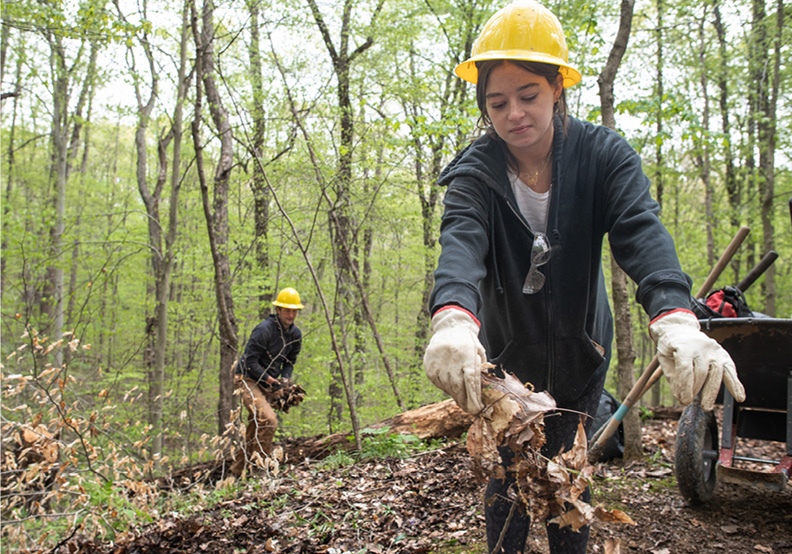
The Baileys Trail System in Wayne National Forest was conceptualized in part by OHIO alumni. The project has provided research opportunities for, and has received support from, Ohio University students and faculty. Photo by Dylan Townsend, BSVC ’24.
Over the years, the Baileys project has also fueled research opportunities for the University, including the first formal internship program with Wayne National Forest. In 2018, six OHIO students spent the summer conducting field surveys on the first 36 miles of the system. The interns documented animal, plant and archaeological resources, along the way discovering two new populations of a state-endangered dragonfly, several sensitive plant species and two new archaeological sites.
More recently, Emily Sebring, a visual communications major at OHIO, participated in a rewarding August 2023 internship experience with ORCA, a council of governments formed to sustainably focus on outdoor recreation as an asset for communities and to develop the Baileys Trail System.
“It’s really nice, just being able to see the work I’m doing impact communities,” she says. “The nice thing about working with social media and stuff like that is,
I get to see people engage with it.”
OHIO has also been involved in a socioeconomic impact study to set a baseline prior to the trail system’s development. This sort of research not only is relevant to Baileys, but will help inform projects now underway in Vermont, California, Pennsylvania and Washington that are using the same development consultants.
When complete, the Baileys Trail System will connect to the Hockhocking Adena Bikeway, a 22-mile paved bike path that follows the Hocking River along the cherry trees on the Athens Campus, bringing the project full circle.

An aerial view of the Truetown Discharge site, the state’s largest single acid mine drainage discharge site. OHIO faculty members have developed a process to clean up the iron oxide deposits that pollute the waterway. Photo by Ben Wirtz Siegel, BSVC '02
Pollution to Paint
It would be a short bike ride from the Baileys trailhead in Chauncey to the towns of Millfield and Trimble, where children might draw their rivers in vivid shades of yellow or orange.
It’s not because they’ve imagined a fanciful golden waterway, but because that’s been their reality growing up in these Southeast Ohio communities—like other communities across Pennsylvania, West Virginia, Kentucky or Tennessee—where water drainage from abandoned coal mines, packed with iron oxide, has leached from tunnels underground to color streams and damage habitats.
At OHIO, researchers John Sabraw, professor of painting + drawing in the College of Fine Arts, and Guy Riefler, professor of civil and environmental engineering in the Russ College of Engineering and Technology, have spent more than a decade designing a method to not only clean up local streams, but in fact transform the damaging waste into an artist-quality pigment for use in paint.
Sabraw and Riefler partnered with local community agency Rural Action to commercialize the idea through the social enterprise company True Pigments. The Ohio Department of Natural Resources’ Division of Mineral Resources Management provided $3.5 million in pilot funding to construct a full-scale acid mine drainage water treatment plant that will help source materials for True Pigments. The plant broke ground last June at the Truetown Discharge site in Millfield, Ohio, the largest single acid mine drainage discharge site in the state.

The local impact is tangible: True Pigments and the new water treatment plant will provide local jobs while helping remediate damage to Sunday Creek, just a few miles north of OHIO’s residential campus.
“We are thankful to have partners like Rural Action and offices at the state and federal levels to help make this project a reality,” Sabraw says. “This new facility is a critical step in restoring clean water to the localities of Southeast Ohio, and in demonstrating how art plays a vital role in creating a vibrant community.”
More importantly, this project has the potential to be transformational for communities beyond Sunday Creek’s banks. There are more than 45,000 abandoned coal mines across the country, as mapped by the U.S. Office of Surface Mining Reclamation and Enforcement. With concentrations east of the Rocky Mountains and along the length of the Appalachian Mountains, abandoned mines are located in more than half of all U.S. states. They also wreak havoc in South Africa, Northeast India and across Europe. This is a global problem, with researchers at countless universities working on potential remediation. But OHIO’s paint solution is entirely unique, creating a potential model for communities everywhere.

The CONSOL Energy coal mine in Pennsylvania. Photo by Ben Wirtz Siegel, BSVC '02
Black Diamonds to Sustainable Decking
Meanwhile, researchers in OHIO’s Institute for Sustainable Energy and the Environment have been hard at work on another way to turn the region’s past extraction economy into a new, more sustainable industry for the region.
Under the leadership of Jason Trembly, BSCHE ’03, MS ’05, PHD ’07, professor of mechanical engineering in the Russ College and director of the ISEE, a team of OHIO faculty and students have successfully converted waste from coal mining, in combination with disposed plastic bottles, into new, affordable decking material for the construction industry. The project was funded through a $5 million grant from the U.S. Department of Energy.
“The carbon dioxide emissions are 60 to 80% less than your typical wood-based product,” Trembly told state leaders on a recent tour of his lab. “And it allows us to clean up legacy mining sites where there are billions of tons of material that’s available.”
Similar to plans for True Pigments, Trembly’s vision for the future of this new decking product is to develop partnerships supporting construction of a manufacturing facility in the region where it will be produced for commercial sale, fueling jobs and growth in Southeast Ohio and supporting the building industry across the state. Over time, production growth could lead to opportunities to repurpose coal waste across the region and beyond.
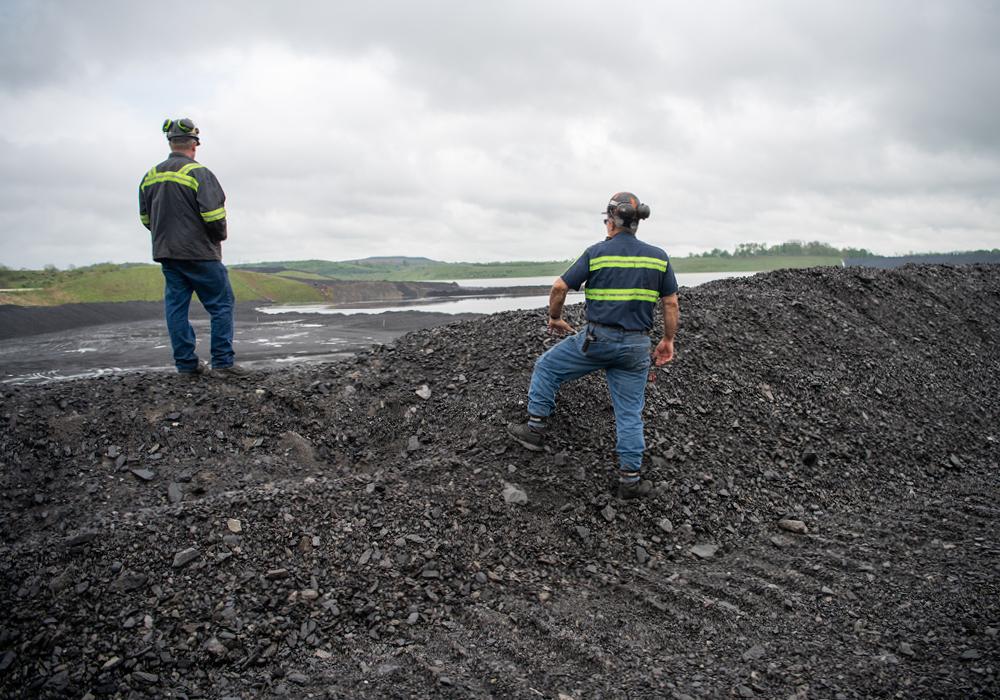
Scratching the Surface
Beyond these few shining examples, OHIO is rich with research ideas and projects rooted in place with potential to drive regional growth and success:
In the Heritage College of Osteopathic Medicine, the Diabetes Institute is a national leader in diabetes research in rural communities, working to solve care inequities in Appalachia and improve local diabetes education.
In the Scripps College of Communication, faculty members worked with the Athens Police Department and the Athens County Sheriff’s Office to develop virtual reality law enforcement training now used across the state.
In the College of Arts and Sciences, the Center for Intervention Research in Schools involves both OHIO faculty and students in the development and evaluation of interventions for youth with attention-deficit/hyperactivity disorder in schools across the region.
In early April, the University hosted its third annual Place-Based Teaching and Learning Symposium. This free event includes a Place-Based Teaching Workshop and celebrates how place enhances teaching and learning in communities, building connection with and pride in them.
The list could go on and on. The work itself certainly will. It has been 220 years since OHIO’s founding and two years since the University made the nation’s short list of R1 research institutions. Imagine the impact OHIO can—and will—have in our next 200 years.
Robin Oliver is the vice president for University Communications and Marketing.
Featured photo courtesy of Visit Athens County


